
18K vs 22K Gold: Which is the Best Purity for You and Why
When it comes to gold jewellery, one of the most common dilemmas is choosing between 18K vs 22K gold. Each option has its own strengths and trade-offs, appearance, durability, cost, and investment potential, so understanding the differences is key.
In this post, we’ll break things down in simple terms and also show why jewellery from KYMEE in 18K gold vermeil offers a smart, stylish, and practical choice for women.
Understanding Gold Purity and Karats
What “karat” really means in gold jewellery
In the world of gold, “karat” (written as “K”) refers to the measure of purity, how much of the item is actually gold versus other metals (called alloys). For example:
- 24K gold is essentially pure gold (≈99.9%).
- 22K gold contains approximately 91.6% gold.
- 18K gold contains about 75% gold.
So when you see jewellery stamped “18K” or “22K”, that indicates how pure the gold is, but not how heavy or expensive the piece is (that depends on weight, design, and brand).
How 18K and 22K stack up in terms of purity
- 22K gold: With about 91.6% pure gold, this means it has a high gold content and therefore commands a higher value per gram. However, it's softer and less resistant to wear.
- 18K gold: At roughly 75% pure gold, the remaining 25% consists of alloy metals (copper, silver, nickel, etc.). This mix increases durability and makes the gold slightly less intense in colour, but still very rich.
So the key takeaway: higher purity = more gold content = richer yellow colour + higher cost, but also generally softer metal. Lower (but still high) purity, like 18K, offers a strong balance.
The Colour & Appearance Differences
Why does 22K gold have that richer yellow tone?
Because 22K has about 91.6% pure gold, the visual tone is a very deep, vibrant yellow-gold. Many traditional jewellery pieces (especially in India and other parts of Asia) use 22K because that rich look is prized.
How 18K gold offers subtle variation and versatility
With 18K gold, because there is more alloyed metal, the yellow colour is still rich, but slightly more muted or soft compared with 22K. That subtle difference actually gives designers more flexibility; you’ll find gorgeous variations like rose gold and white gold in 18K, which aren’t as common in 22K pieces.
For women choosing jewellery, this means that 18K gold often blends beautifully with a wider range of outfits, skin tones, and occasions.
Durability, Wearability & Everyday Use
Which is more durable: 18K or 22K?
Though premium in value, 22K is softer than 18K, meaning it’s more prone to scratching, bending, or damage if worn every day. Many jewellery guides note that while 22K is still quite wearable, 18K tends to be better suited for modern, active lifestyles.
What does this mean for jewellery worn daily?
If you’re buying a piece you’ll wear often, like a necklace, ring, or bracelet, you pair with casual or work outfits, then 18K is often the more practical choice. It offers a beautiful gold look, but with better durability and less risk of deforming. On the other hand, if you have jewellery reserved for special occasions, or you like the ultra-rich look of high-karat gold, 22K could be ideal.
Investment Value: Resale, Purity & Traditions
22K as a traditional investment piece
In many cultures, gold jewellery serves both as an ornament and as a store of value. Because of its higher purity, 22K often retains value well and is preferred in investment-driven purchases. Some sources point out that 22K is more favourable for resale or ritual purchases.
18K: balancing style and value for modern wear
While its gold content is lower than 22K, 18K still holds significant value and adds the bonus of versatility and style. It’s increasingly popular for designer jewellery because it offers a blend of beauty, practicality and affordability. So for a woman buying jewellery today, for self-wear, gifting or style investment, 18K often hits the sweet spot.
Skin Sensitivity, Allergies & Comfort
When high-purity (22K) might mean softer metal
Because 22K gold contains fewer alloyed metals, it's often considered more “pure” and less likely to cause allergic reactions (assuming the alloying metals are safe). But it also means the surrounding alloys are fewer, which may make the overall metal softer and more vulnerable under stress.
Why 18K might be more practical for sensitive skin
Since 18K gold uses a higher proportion of alloys, it matters which alloy metals are used (nickel, copper, etc), so when buying, check for hypoallergenic labels. Many designer brands use safe alloys or plating techniques to ensure comfort. From a durability standpoint, 18K has the edge for frequent use without compromising look or comfort.
Jewellery Design Freedom & Style Trends
Why 18K supports more intricate designs and gemstones
Because 18K gold is stronger than 22K in an everyday wear setting, designers can create slimmer settings, embedded gemstones, filigree, unique shapes and delicate chains. This means more creative, fashion-forward jewellery options.
Traditional motifs vs modern minimalist looks
22K often aligns with heavy, richly yellow pieces, traditional Indian bridal sets, or currency-style jewellery. In contrast, 18K supports both classic and minimalist looks, think delicate chains, everyday studs, mixed metals, and stacking rings. For the modern woman who wants flexibility, 18K is very appealing.
Cost and Budget Considerations
How purity affects cost per gram
Because 22K gold has higher gold content, the cost per gram (or per karat) is higher. The difference isn’t just in price, it’s in how much gold you’re actually getting. Guides point out that 18K is more affordable but still offers a premium gold feel.
What to choose if the budget is a constraint
If budget is a constraint but you still want quality gold jewellery, 18K is a smart choice. You get strong design flexibility, wearability, and a good amount of gold content, without paying the premium of 22K. For everyday jewellery or pieces you’ll wear often (instead of storing), this is often a wise choice.
Why Choose 18K Gold Vermeil Jewellery from KYMEE
What is “gold vermeil” and how does KYMEE deliver value
Gold vermeil refers to a base metal (often sterling silver) that is plated with a thick layer of genuine gold, often 18K, making it look luxurious, while keeping costs more accessible.
These highlight how the brand uses 18K gold vermeil to offer elegant, stylish jewellery pieces for women, balancing a luxury look, respectable gold content (via vermeil) and affordability.
By choosing KYMEE’s 18K gold vermeil line, you’re essentially choosing jewellery that taps into the benefits of 18K gold (colour, durability, design flexibility) while being smart about budget and wearability for a woman’s lifestyle.
How to Choose Between 18K and 22K for Your Needs
Checklist: Purpose, wear frequency, design, budget
When selecting your jewellery, ask:
- Will I wear this piece daily, or only occasionally?
- Do I prefer a very intense gold colour, or something slightly more subtle and versatile?
- Is design complexity, gemstone setting or modern style important to me?
- What is my budget, and how important is resale value vs aesthetics?
If you answer “daily wear/modern design/budget‐sensitive,” → 18K is likely best.
If you answer “investment/bridal/traditional rich gold look”, → 22K may be more fitting.
Situations where 22K still makes sense
- If the jewellery is mainly for investment or ceremonial occasions.
- If you favour a very rich yellow tone and are less concerned about everyday durability.
- If you are buying traditional bridal or heirloom pieces and expect to wear them less frequently.
Care & Maintenance for Your Gold Jewellery
Tips for maintaining 18K pieces vs 22K pieces
- Clean gently with mild soapy water, a soft cloth, and avoid harsh chemicals.
- For 22K: be mindful of bending or scratching, store separately, and avoid rough use.
- For 18K vermeil (like KYMEE pieces): since it's plated, avoid contact with heavy chemicals, perfumes, and lotions, which may wear the layer faster.
- Periodically inspect clasps, settings and plating thickness.
Storage, cleaning, and inspection advice
- Store jewellery in a soft pouch or separate compartment so pieces don’t scratch each other.
- Remove jewellery when exercising or doing heavy work.
- Keep away from chlorine, salt water, and cleaning agents.
- For vermeil: After long use, consider re-plating for a renewed look.
Summary Table: 18K vs 22K at a Glance
| Factor | 18K Gold | 22K Gold |
| Gold Content | ~ 75% gold dusoul.ae+1 | ~ 91.6% gold PIMBEX+1 |
| Colour Tone | Rich but slightly softer yellow | Deep, intense yellow |
| Durability | Better for daily wear | Softer, more prone to wear |
| Design Flexibility | High – good for detailed designs, gemstones | Less flexible for very intricate settings |
| Cost | Lower cost per gram | Higher cost per gram |
| Use Case | Everyday jewellery, style pieces, modern wear | Investment, traditional motifs, occasional wear |
| Skin/Allergy Consideration | Depends on alloys used – check plating/alloy | Fewer alloys, so potentially less risk, but still a soft metal |
Conclusion
Choosing between 18K vs 22K gold ultimately comes down to your purpose, lifestyle, budget and personal style. If you want jewellery that you’ll wear often, that complements modern looks, that balances style + durability, then 18K is a strong choice. If your aim is investment, traditional luxury, deep yellow tone and less frequent use, 22K may appeal.
And that’s where brands like KYMEE shine, offering 18K gold vermeil jewellery for women that captures the gold-rich aesthetic, the design freedom and the everyday wearability, all at smart value. Whether you choose a delicate KYMEE necklace, earrings or a cluster set, you’re embracing a modern gold jewellery path that balances luxury with practicality.
FAQs
1. Is 18K gold “good enough” compared to 22K for jewellery?
Yes, if you’re wearing the piece often, design matters, and you want style + durability, 18K is an excellent choice. It offers much of the look of gold, but with more practicality.
2. Does 22K always mean better value?
Not necessarily. While 22K has higher gold purity (and thus theoretically higher intrinsic value), if the piece is very delicate, heavily used, or you prefer modern design, the extra cost may not yield proportional benefit.
3. What does “gold vermeil” mean, and is it real gold?
“Gold vermeil” refers to items (usually a sterling silver base) that are thickly plated with real gold (often 18K). So yes, you get a real gold finish, with more accessible pricing. The plating thickness and quality matter.
4. For women’s jewellery, is 18K better than 22K?
In many cases, yes: For everyday wear, layering pieces, design versatility and budget-friendly luxury, 18K often wins. However, if you’re buying a special heirloom piece and prefer ultra-rich yellow gold, 22K still has appeal.
5. Will 18K gold jewellery look “cheap” compared to 22K?
No, a well-made 18K piece still shows the warm gold tone, and often in designer pieces the finish, design, plating (in case of vermeil) or brand elevate the look far beyond mere purity figures.
7. Can you wear 22K jewellery every day?
You can, but you should be prepared for extra care. Because 22K is softer, it may scratch or wear more easily with everyday use, especially in rings or bracelets that get more friction.
8. Is 18K gold worth buying?
Yes, it’s a good balance of purity, durability, and beauty.
9. Can you wear 18K gold every day?
Yes, it’s durable enough for daily wear.
10. Does 18K gold last a lifetime?
Yes, with proper care, it can last a lifetime.
11. Will 18K gold fade?
No, solid 18K gold doesn’t fade, but it can get dull over time; polishing restores the shine.
12. Does water ruin 18K gold?
No, water doesn’t ruin it, but frequent contact with chlorine or salt water can dull it.









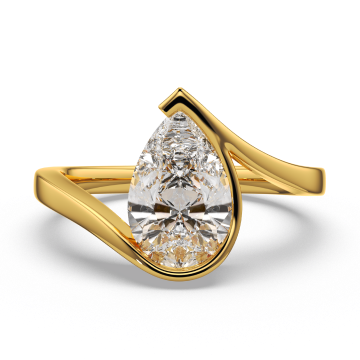
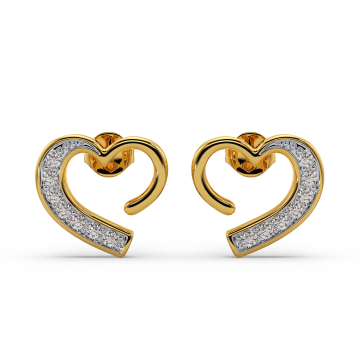
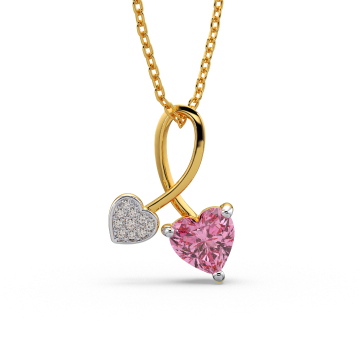
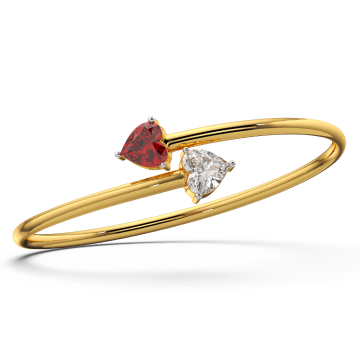
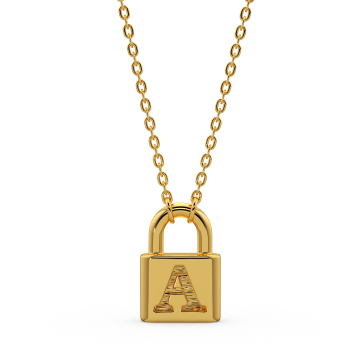
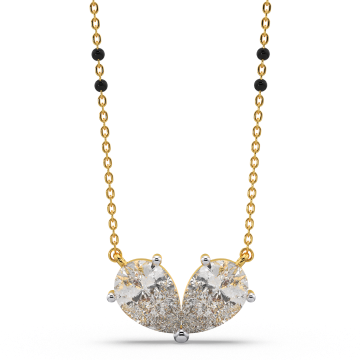
 All Rings
All Rings Toi Et Moi Rings
Toi Et Moi Rings Wedding Bands
Wedding Bands Solitaire Rings
Solitaire Rings Stackable Rings
Stackable Rings Dainty Rings
Dainty Rings Personalized Rings
Personalized Rings Daily Wear Rings
Daily Wear Rings Halo Rings
Halo Rings Ring Set
Ring Set For Daily Wear
For Daily Wear For Party
For Party For Work
For Work For Gifting
For Gifting For College
For College For Festive Days
For Festive Days All Earrings
All Earrings Hoop Earrings
Hoop Earrings Drop Earrings
Drop Earrings Stud Earrings
Stud Earrings Name Earrings
Name Earrings Threader Earrings
Threader Earrings All Necklaces
All Necklaces Charm Pendants
Charm Pendants Pendant & Necklaces
Pendant & Necklaces Station Necklaces
Station Necklaces Personalized Necklaces
Personalized Necklaces Layered Necklaces
Layered Necklaces Drop Necklaces
Drop Necklaces All Bracelets
All Bracelets Name Bracelets
Name Bracelets Chain Link Bracelets
Chain Link Bracelets Bangle Bracelets
Bangle Bracelets Charm Bracelets
Charm Bracelets Tennis Bracelets
Tennis Bracelets